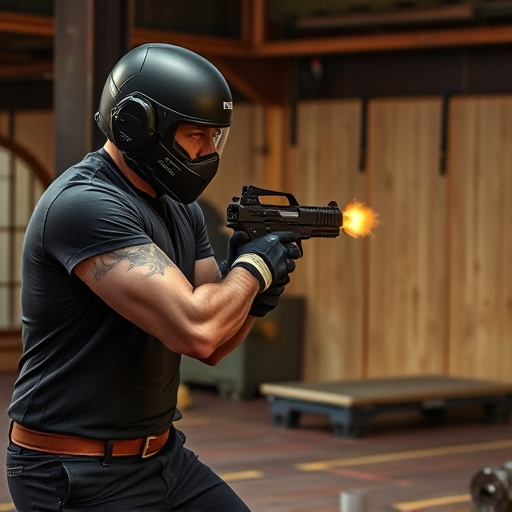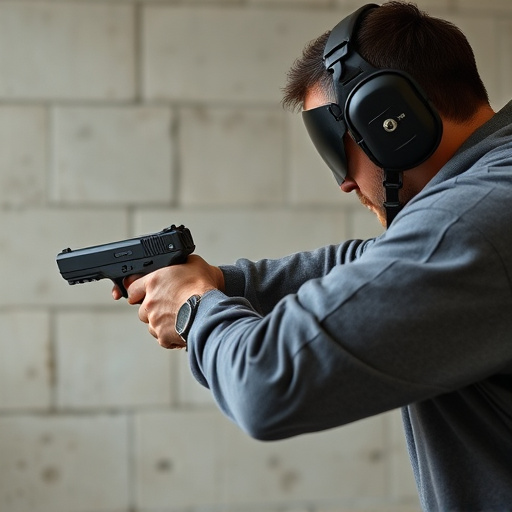Rechargeable Stun Gun Battery: Charging, Specs & Safety Guide
Rechargeable stun guns, powered by Li-ion or NiMH batteries, offer a reliable personal safety soluti…….
Rechargeable stun guns, powered by Li-ion or NiMH batteries, offer a reliable personal safety solution. Proper charging involves using the correct charger (USB or dedicated), avoiding overcharging, and regular battery health checks. Key factors include capacity (Ah), voltage, charge cycles, and following manufacturer instructions. Best practices: power off before charging, use provided chargers, avoid extremes, store safely, check batteries regularly, and address any damage promptly for optimal performance and longevity.
Rechargeable stun guns are a popular choice for personal safety, offering convenience and cost savings. Understanding the battery specifications is crucial for optimal performance and longevity. This guide delves into the intricacies of rechargeable stun gun batteries, covering types and compatibility, charging process, and essential battery parameters like Ah (ampere-hour) and voltage. Learn the proper steps to charge your stun gun, ensuring peak functionality when you need it most. Safety precautions and maintenance tips are also highlighted for responsible use and extended battery life.
- Understanding Rechargeable Stun Gun Batteries: Types and Compatibility
- Charging Process: Step-by-Step Guide for Optimal Performance
- Battery Specifications: Ah, Voltage, and Charge Cycle Considerations
- Safety Precautions When Handling and Charging Stun Guns
- Maintaining Your Stun Gun's Battery Life: Tips and Best Practices
Understanding Rechargeable Stun Gun Batteries: Types and Compatibility

Rechargeable stun guns have revolutionized personal safety by offering a sustainable and cost-effective alternative to disposable batteries. Understanding the rechargeable battery types and charging processes is crucial when it comes to efficient and safe usage. The two primary types of rechargeable batteries used in stun guns are Lithium-ion (Li-ion) and Nickel-Metal Hydride (NiMH). Li-ion batteries, known for their high energy density, provide longer runtime between charges while maintaining a compact design. NiMH batteries, on the other hand, offer a more environmentally friendly option with reduced risk of overcharging.
Proper charging is an essential aspect of maintaining the performance and longevity of your stun gun battery. Different models may have unique charging requirements, so always refer to the manufacturer’s instructions. Typically, these batteries can be charged using a standard USB cable or dedicated charger. It’s important to note that overcharging should be avoided to prevent damage; most modern devices feature protection mechanisms to safeguard against this. Regularly checking the battery’s health and replacing it when necessary ensures optimal stun gun functionality and safety.
Charging Process: Step-by-Step Guide for Optimal Performance

Recharging a stun gun battery is a straightforward process, but proper execution is key to maintaining optimal performance. First, ensure your stun gun is powered off and disconnected from any power source. Next, locate the charging port—usually a small slot with a specific shape or symbol indicating its purpose. Insert the provided charging cable carefully, aligning the connector’s pins correctly into the port. A secure connection should be established with no wiggling.
Now, plug the other end of the cable into a compatible charger or direct current (DC) power source. Verify that the voltage matches the stun gun’s specifications, typically listed on a label inside the device or in its user manual. Leave it plugged in for the recommended charging time, usually indicated as a percentage or time frame. After charging is complete, unplug the cable and allow the battery to sit for a few minutes before turning the stun gun back on to ensure stability.
Battery Specifications: Ah, Voltage, and Charge Cycle Considerations

Stun guns, like any electrical device, rely on robust batteries to function effectively. When considering a rechargeable stun gun, understanding its battery specifications—namely capacity (Ah), voltage, and charge cycles—is paramount for ensuring optimal performance and longevity. Capacity, measured in Ampere-hours (Ah), dictates the energy storage and discharge capabilities of the battery. Higher Ah ratings generally translate to longer use times between charges. Voltage, typically expressed in volts (V), represents the pressure at which electrical power is delivered; standard stun guns often operate between 7.4V and 12V.
Charge cycles refer to the number of complete discharge-recharge cycles a battery can withstand before its capacity starts to diminish. Rechargeable stun gun batteries typically have higher charge cycle ratings compared to non-rechargeable alternatives, making them a sustainable choice. When learning how to charge stun gun properly, remember these specifications; using the right charger and ensuring full discharge before recharging can help maintain battery health and maximize its service life.
Safety Precautions When Handling and Charging Stun Guns

When handling and charging a stun gun, safety should be your top priority. Always ensure that the device is turned off before attempting to charge it. Never leave a charging stun gun unattended, as it could potentially cause a fire or electrical shock if damaged or exposed to water. Use only the charger provided with your stun gun and follow all instructions carefully. Avoid exposing the battery to extreme temperatures; both too hot and too cold conditions can reduce its lifespan.
Proper storage is equally crucial. Keep your stun gun in a secure, dry place away from children and pets. Check the battery level regularly and replace it when necessary. If you notice any signs of damage or unusual behavior during charging, such as smoke, a burning smell, or the device overheating, immediately discontinue use and consult a professional for repair or replacement to ensure your safety.
Maintaining Your Stun Gun's Battery Life: Tips and Best Practices

Properly charging your stun gun battery is crucial for maintaining optimal performance and extending its lifespan. Always refer to the manufacturer’s guidelines when it comes to charging instructions, as specifications may vary between models. A typical stun gun battery should be charged using a dedicated charger designed specifically for that type of battery. Avoid using universal chargers, as they might not provide the correct voltage or current, leading to potential damage or reduced battery life.
To ensure longevity, it’s essential to develop best practices when charging your stun gun. Allow the battery to reach its full capacity before removing it from the charger; most modern devices will automatically shut off once fully charged. Avoid leaving the battery charged for extended periods as this can lead to overcharging, which is detrimental to its health. Regularly clean the contact points of both the charger and the stun gun to ensure optimal conductivity, preventing any buildup of dirt or corrosion that could hinder charging efficiency.
Understanding the specifications of your rechargeable stun gun battery, including its Ah (ampere-hour), voltage, and charge cycle, is key to ensuring optimal performance. By following a simple step-by-step charging guide and implementing best practices for maintenance, you can keep your stun gun ready when you need it most. Remember, proper handling and safety precautions are paramount to prevent accidents and ensure the longevity of your device. Learn how to charge stun guns correctly, and always refer to the manufacturer’s guidelines for specific battery care instructions.


